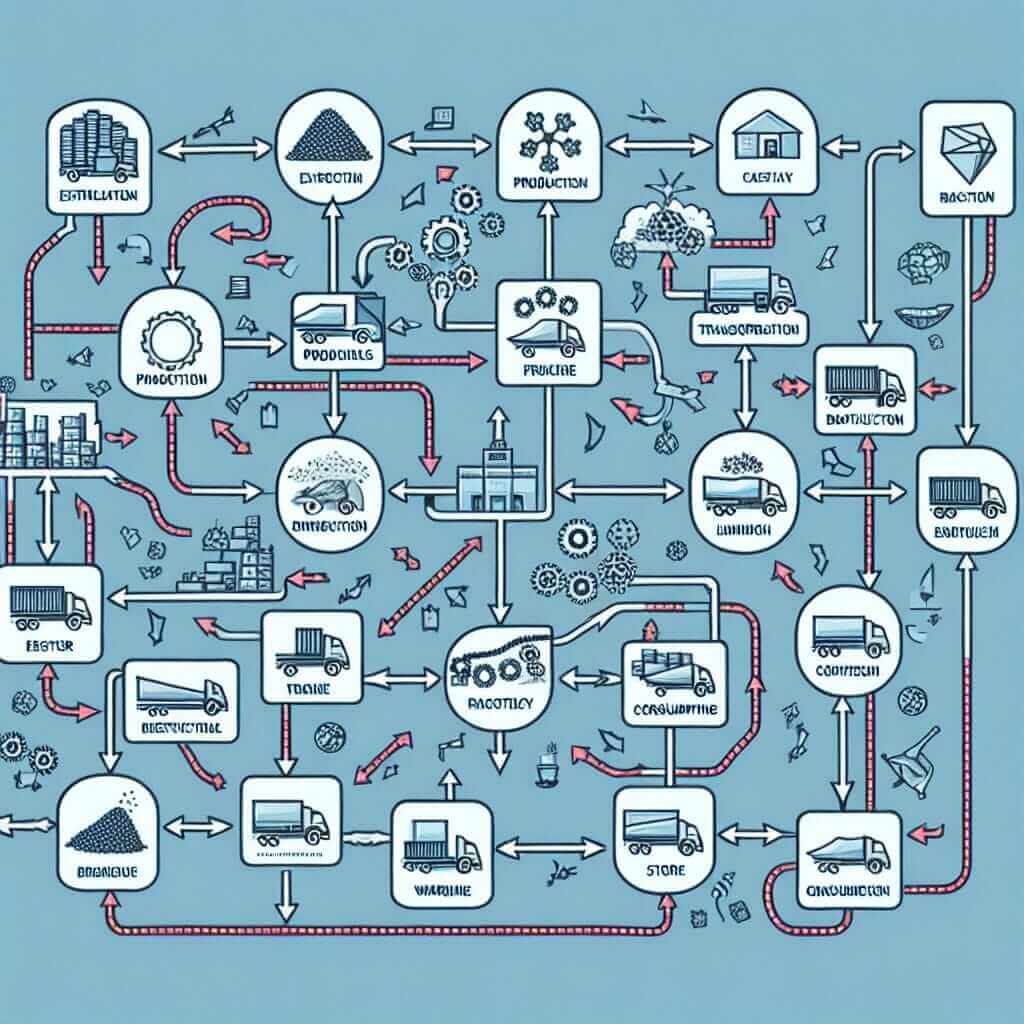The IELTS Reading section tests one’s ability to understand academic texts, covering a variety of topics. One recurring theme is technological advancements and their impact on society. A pertinent modern-day subject that one might encounter is “How is blockchain technology influencing global supply chain transparency?” This topic’s relevance has surged due to blockchain’s growing applications across various industries. In this article, we will delve into the details of this topic, offering an IELTS reading exercise to help you prepare.
Reading Practice Test: Blockchain and Supply Chain Transparency
Reading Passage
Title: The Role of Blockchain in Enhancing Global Supply Chain Transparency
Blockchain technology, initially developed as the underlying technology for Bitcoin, has found numerous applications in various fields, including the global supply chain industry. The decentralized, immutable, and transparent nature of blockchain promises to address many issues plaguing the supply chain sector, such as fraud, inefficiency, and lack of transparency.
Supply Chain Challenges
The global supply chain is an intricate network involving multiple parties, including suppliers, manufacturers, and distributors. Managing such a complex system often results in inefficiencies, errors, and fraud. Traditional supply chain management systems, which rely heavily on paper documents and centralized databases, are prone to data manipulation and delays in information sharing.

Blockchain as a Solution
Blockchain technology offers a digital ledger that records transactions across many computers. This ledger is immutable, meaning once data is entered, it cannot be altered. Each block contains a cryptographic hash of the previous block, a timestamp, and transaction data. This structure ensures data integrity and transparency, as all participants in the network can view the entire transaction history.
In supply chains, blockchain can be utilized to track the journey of products from manufacture to delivery. Each step of the process is documented on the blockchain, providing a transparent and verifiable history of the product. This transparency helps prevent fraud and ensures that products meet regulatory and safety standards.
Real-World Applications
Several companies have already integrated blockchain into their supply chain operations. For example, Walmart uses blockchain to trace the origin of its produce. By scanning a product’s QR code, consumers can access detailed information about the product’s origin, journey, and handling. This increased visibility ensures product freshness and bolsters consumer trust.
In another instance, IBM’s blockchain-based Food Trust Network aims to improve food safety by enabling all participants, from farmers to retailers, to access and share supply chain data. This helps in quickly identifying and rectifying issues, such as contamination, thus reducing foodborne illnesses.
Benefits and Future Outlook
The implementation of blockchain in supply chains offers numerous benefits, including improved traceability, enhanced security, reduced costs, and increased efficiency. As more industries adopt blockchain, its influence on global supply chain transparency will likely expand, leading to a more reliable and trustworthy system.
Questions
1. Multiple Choice
Choose the correct letter, A, B, C, or D.
-
What is one main advantage of blockchain in supply chains?
- A. Increased data manipulation
- B. Centralized databases
- C. Improved product traceability
- D. Decreased product transparency
-
According to the text, what problem in the supply chain does blockchain address?
- A. Increased costs
- B. Delayed information sharing
- C. Reduction in regulation standards
- D. Lack of consumers
2. True/False/Not Given
Do the following statements agree with the information given in the passage?
-
Blockchain ensures that data entered cannot be altered.
- True
- False
- Not Given
-
Walmart uses blockchain to trace the origin of its electronic products.
- True
- False
- Not Given
3. Matching Information
Match each statement with the correct part of the passage.
- Benefits of blockchain integration are discussed.
- A. Blockchain as a Solution
- B. Real-World Applications
- C. Benefits and Future Outlook
4. Summary Completion
Complete the summary using words from the box below.
Blockchain technology promises to address several issues in the global supply chain, such as and lack of transparency. By documenting every step on the blockchain, it provides a(n) history of the product. Companies like Walmart and IBM have integrated blockchain to enhance supply chain ___, ensuring better product traceability and safety.
Words: inefficiency, verifiable, management, transparency, data manipulation
Answer Keys
1. Multiple Choice
- C. Improved product traceability
- B. Delayed information sharing
2. True/False/Not Given
- True
- False
3. Matching Information
- C. Benefits and Future Outlook
4. Summary Completion
- inefficiency
- verifiable
- transparency
Lessons Learned
Common Mistakes
- Reading too quickly: Skipping details can lead to misunderstanding questions.
- Overlooking keywords: Focusing on keywords helps in locating answers more effectively.
Vocabulary
- Immutable (adj) /ɪˈmjuːtəbl/: Not subject to change.
- Transparency (noun) /trænsˈpærənsi/: Openness and accountability.
- Traceability (noun) /ˌtreɪsəˈbɪlɪti/: The ability to verify the history of a product.
Grammar
- Present Perfect for continuing relevance: “Blockchain technology has found numerous applications.”
- Passive Voice for highlighting actions: “Each step is documented on the blockchain.”
Tips for High Reading Scores
- Skim and Scan: Quickly identify the gist of the passage and locate information.
- Practice Regularly: Consistently practice with various texts to improve speed and comprehension.
- Expand Vocabulary: Familiarize yourself with a wide range of topics to boost understanding.
By regularly practicing with texts like the one provided, you can refine your reading skills and enhance your chances of a high score on the IELTS Reading section. Good luck!